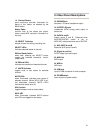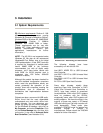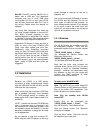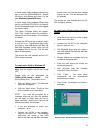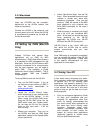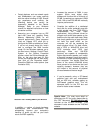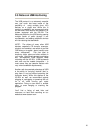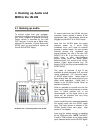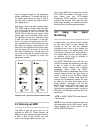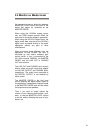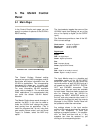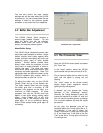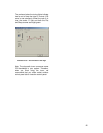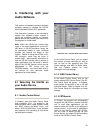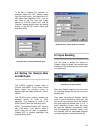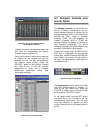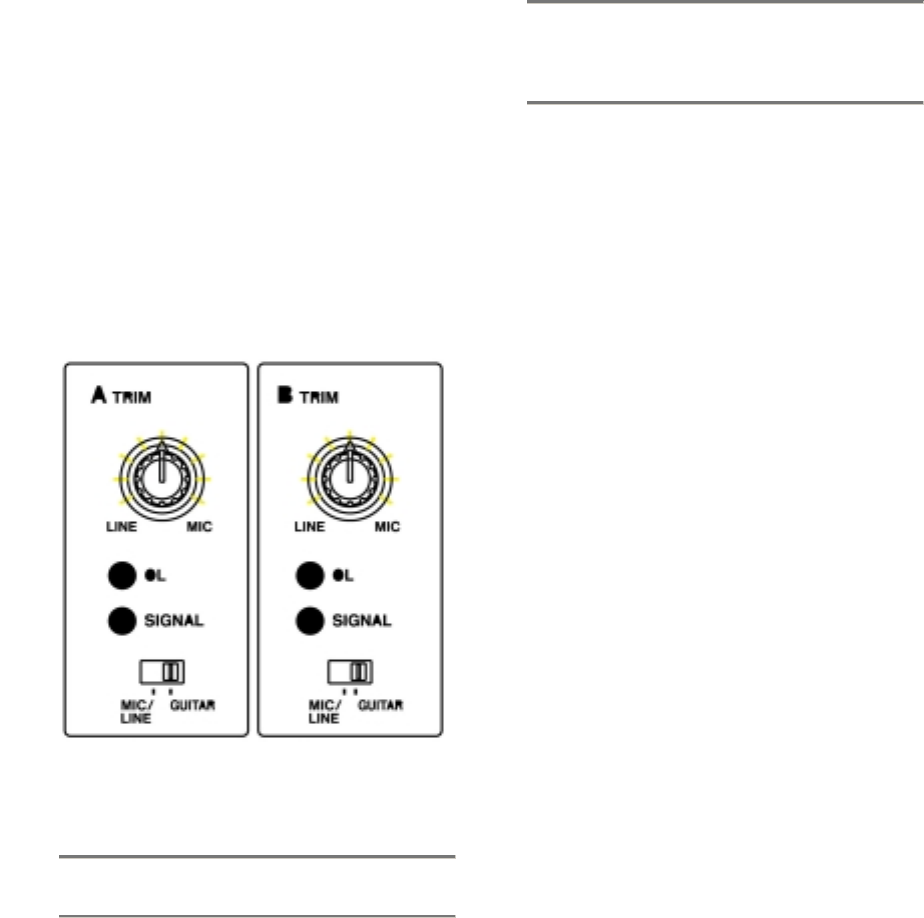
18
input is passed directly to the application
without modification. To reduce the level of
the digital audio signal at inputs A and B,
you will need to reduce the output level of
your digital source.
Note about levels and gain structure here.
The TRIM controls directly affect the input
level at the A/D converters on the US-224,
so it’s advisable to use the SIGNAL and
OVER LEDs to help set your levels. Unlike
analog tape, when recording digital audio,
it’s important to keep your input level close
to 0dB, but never to exceed it. If the input
level is too high, the audio signal will clip -
not a desirable sound. If the input level is too
low, then the dynamic range that the US-
224’s A/D’s are capable of is not being used,
and the signal will be closer to the noise
floor than it needs to be. In either case, this
can not be fixed after the tracks have been
recorded, so it’s important to make this
adjustment carefully.
4.2 Hooking up MIDI
The MIDI in and out jacks give you 16
channels of MIDI I/O. Simply connect the
MIDI out of your keyboard or other device to
a MIDI in jack on the US-224, and vice
versa. If you’ve got a MIDI sync box, you
can use the MIDI I/O’s to send and receive
MTC (MIDI Time Code). This allows you to
sync tracks from your MTC-capable
Portastudio, DTRS multitrack, or any other
machine that accepts time code with your
digital audio software, for transferring tracks
back and forth for editing and processing.
4.3 Using the Input
Monitoring
In digital audio, the amount of time it takes
for the input signal to pass through the
circuitry of the unit and the software
processing and arrive at the outputs will
sometimes result in an audible delay. (This
is commonly referred to as “audio latency”.)
This added delay can be confusing when,
for example, you’re trying to overdub to
previously recorded tracks.
The INPUT MONITOR mixer built into the
US-224 eliminates this problem by providing
a way to listen to the signals you’re
recording directly, without any computer
processing delay. When the INPUT
MONITOR button is depressed, the first two
channel faders control the input levels of
inputs A and B to the US-224’s internal
mixer. Changes in these levels affect the
monitor and headphones outputs, but have
no effect on the audio levels seen by the
audio software application. The first two
MUTE buttons also affect the inputs, and
PAN is also available in this mode; the
inputs come up panned to center, but can be
SELected and PANned anywhere within the
stereo field.
NOTE: In INPUT MONITOR mode faders 3-
4 are inactive.
NOTE: All the controls mentioned here are
also accessible via the ASIO control panel,
which displays the current status of the
INPUT MONITOR section.
Illustration 4.02 - Input trims and level indicator LED’s



